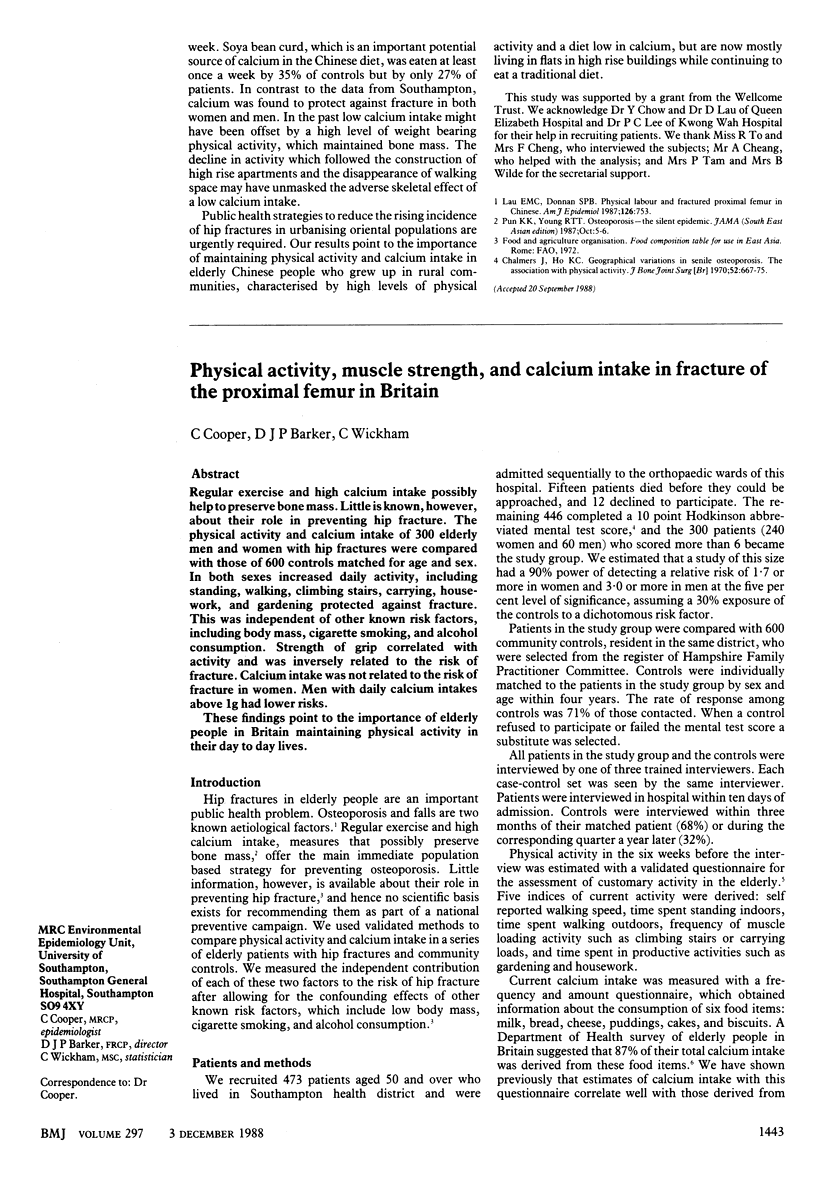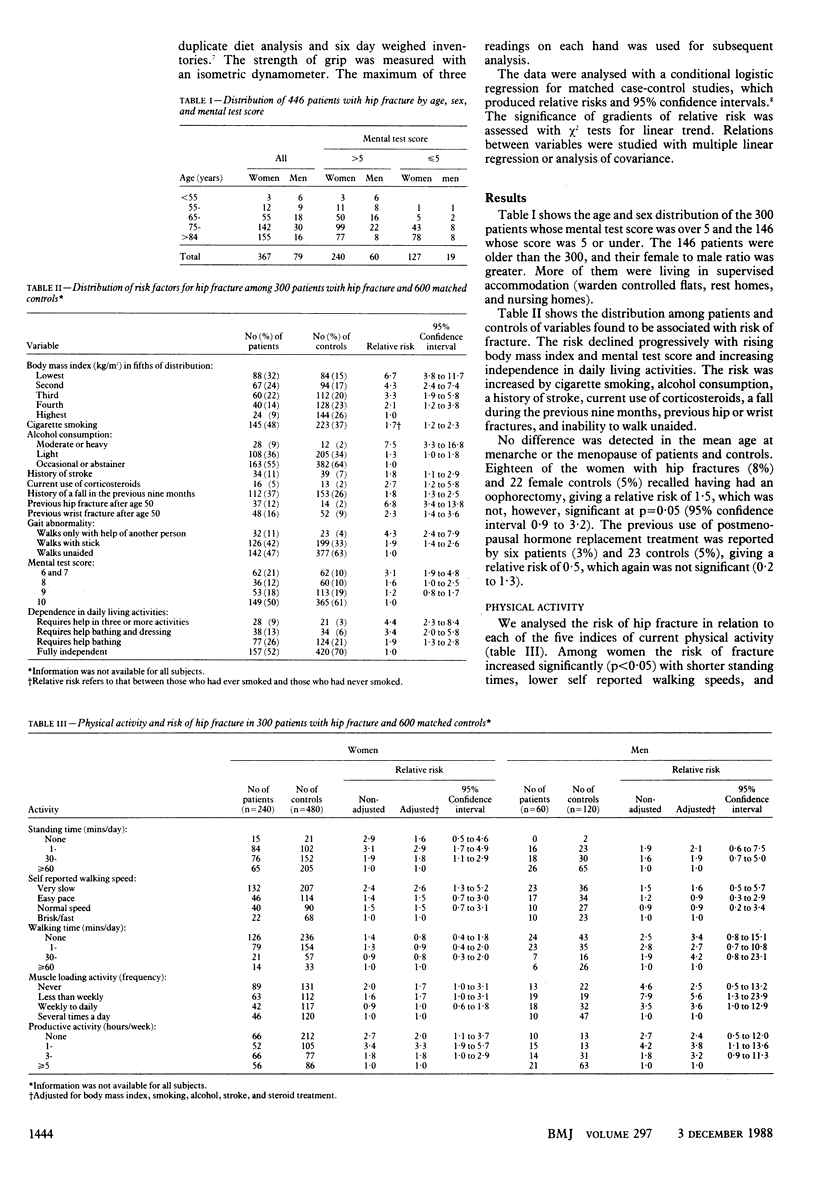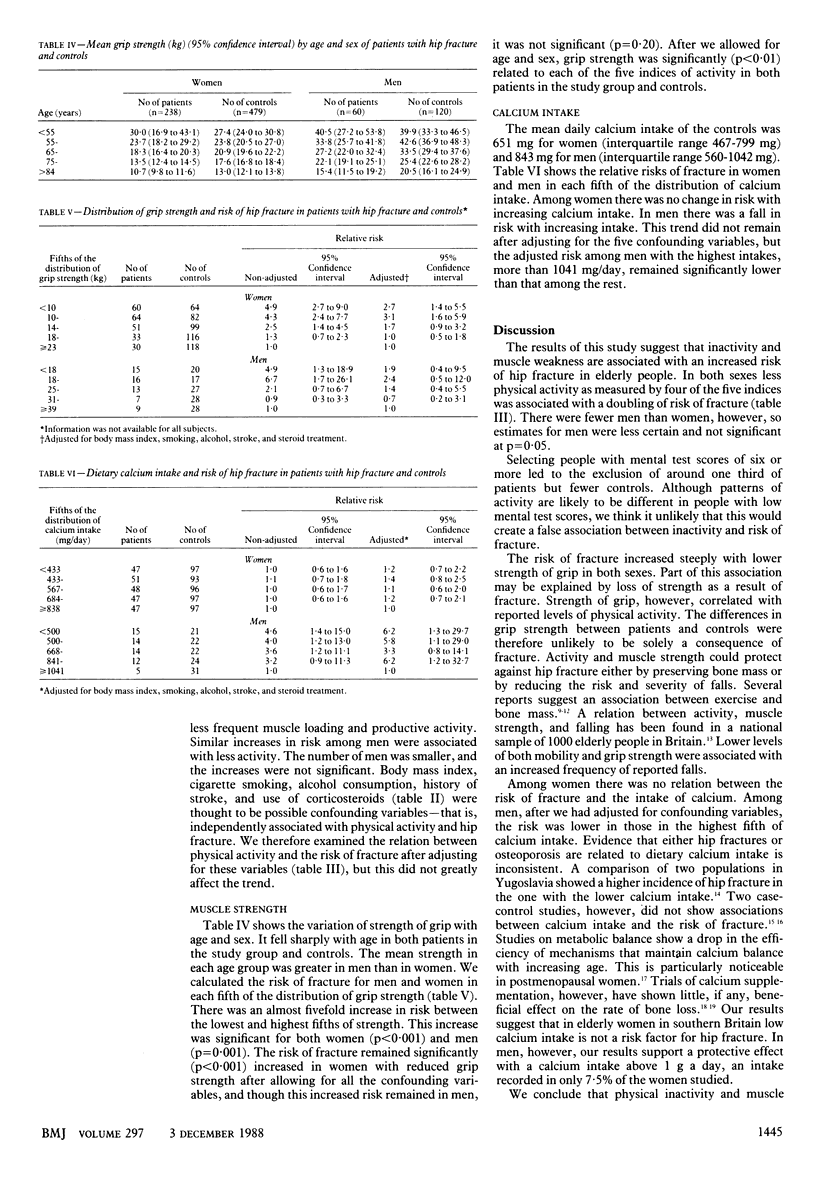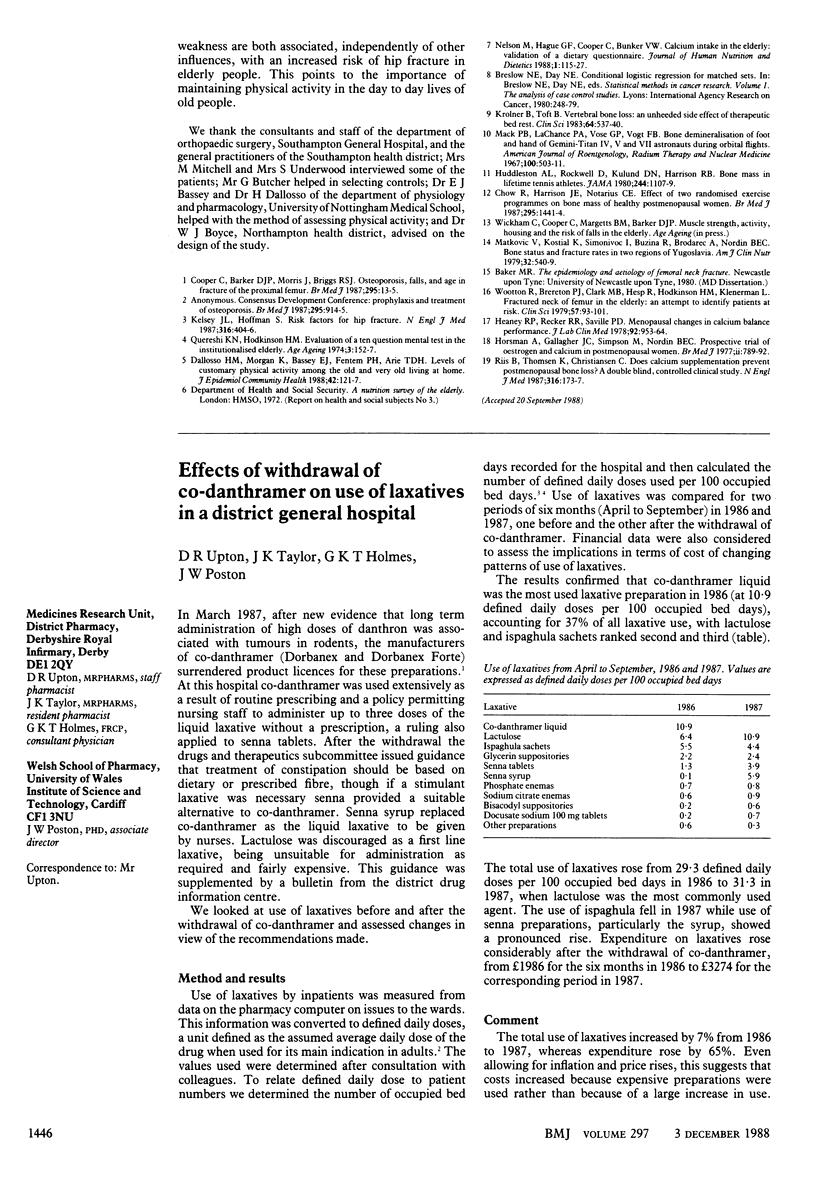Abstract
Regular exercise and high calcium intake possibly help to preserve bone mass. Little is known, however, about their role in preventing hip fracture. The physical activity and calcium intake of 300 elderly men and women with hip fractures were compared with those of 600 controls matched for age and sex. In both sexes increased daily activity, including standing, walking, climbing stairs, carrying, housework, and gardening protected against fracture. This was independent of other known risk factors, including body mass, cigarette smoking, and alcohol consumption. Strength of grip correlated with activity and was inversely related to the risk of fracture. Calcium intake was not related to the risk of fracture in women. Men with daily calcium intakes above 1g had lower risks. These findings point to the importance of elderly people in Britain maintaining physical activity in their day to day lives.
Full text
PDF



Selected References
These references are in PubMed. This may not be the complete list of references from this article.
- Chow R., Harrison J. E., Notarius C. Effect of two randomised exercise programmes on bone mass of healthy postmenopausal women. Br Med J (Clin Res Ed) 1987 Dec 5;295(6611):1441–1444. doi: 10.1136/bmj.295.6611.1441. [DOI] [PMC free article] [PubMed] [Google Scholar]
- Cooper C., Barker D. J., Morris J., Briggs R. S. Osteoporosis, falls, and age in fracture of the proximal femur. Br Med J (Clin Res Ed) 1987 Jul 4;295(6589):13–15. doi: 10.1136/bmj.295.6589.13. [DOI] [PMC free article] [PubMed] [Google Scholar]
- Dallosso H. M., Morgan K., Bassey E. J., Ebrahim S. B., Fentem P. H., Arie T. H. Levels of customary physical activity among the old and the very old living at home. J Epidemiol Community Health. 1988 Jun;42(2):121–127. doi: 10.1136/jech.42.2.121. [DOI] [PMC free article] [PubMed] [Google Scholar]
- Heaney R. P., Recker R. R., Saville P. D. Menopausal changes in calcium balance performance. J Lab Clin Med. 1978 Dec;92(6):953–963. [PubMed] [Google Scholar]
- Horsman A., Gallagher J. C., Simpson M., Nordin B. E. Prospective trial of oestrogen and calcium in postmenopausal women. Br Med J. 1977 Sep 24;2(6090):789–792. doi: 10.1136/bmj.2.6090.789. [DOI] [PMC free article] [PubMed] [Google Scholar]
- Huddleston A. L., Rockwell D., Kulund D. N., Harrison R. B. Bone mass in lifetime tennis athletes. JAMA. 1980 Sep 5;244(10):1107–1109. [PubMed] [Google Scholar]
- Kelsey J. L., Hoffman S. Risk factors for hip fracture. N Engl J Med. 1987 Feb 12;316(7):404–406. doi: 10.1056/NEJM198702123160709. [DOI] [PubMed] [Google Scholar]
- Krølner B., Toft B. Vertebral bone loss: an unheeded side effect of therapeutic bed rest. Clin Sci (Lond) 1983 May;64(5):537–540. doi: 10.1042/cs0640537. [DOI] [PubMed] [Google Scholar]
- Qureshi K. N., Hodkinson H. M. Evaluation of a ten-question mental test in the institutionalized elderly. Age Ageing. 1974 Aug;3(3):152–157. doi: 10.1093/ageing/3.3.152. [DOI] [PubMed] [Google Scholar]
- Riis B., Thomsen K., Christiansen C. Does calcium supplementation prevent postmenopausal bone loss? A double-blind, controlled clinical study. N Engl J Med. 1987 Jan 22;316(4):173–177. doi: 10.1056/NEJM198701223160401. [DOI] [PubMed] [Google Scholar]
- Wootton R., Brereton P. J., Clark M. B., Hesp R., Hodkinson H. M., Klenerman L., Reeve J., Slavin G., Tellez-Yudilevich M. Fractured neck of femur in the elderly: an attempt to identify patients at risk. Clin Sci (Lond) 1979 Jul;57(1):93–101. doi: 10.1042/cs0570093. [DOI] [PubMed] [Google Scholar]


